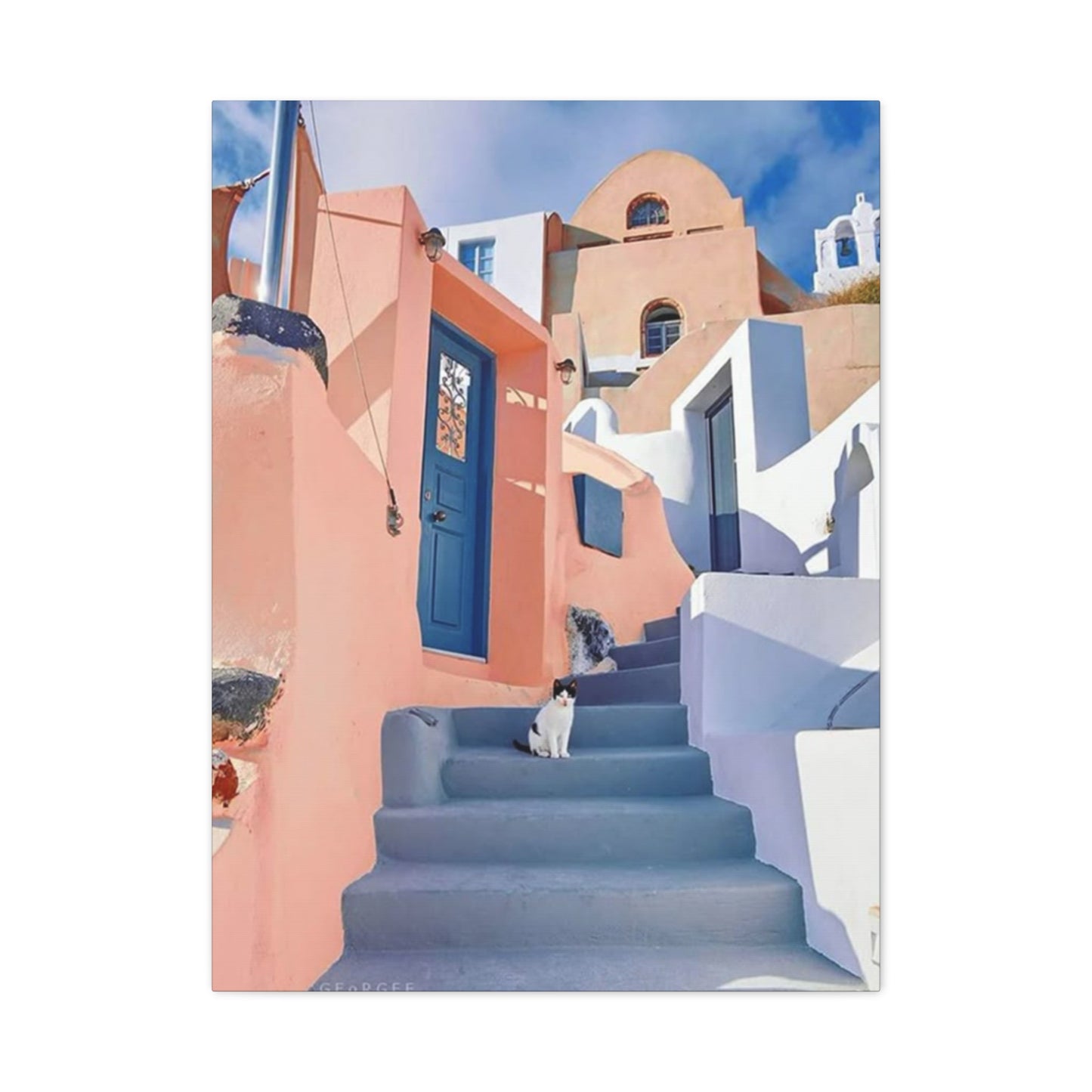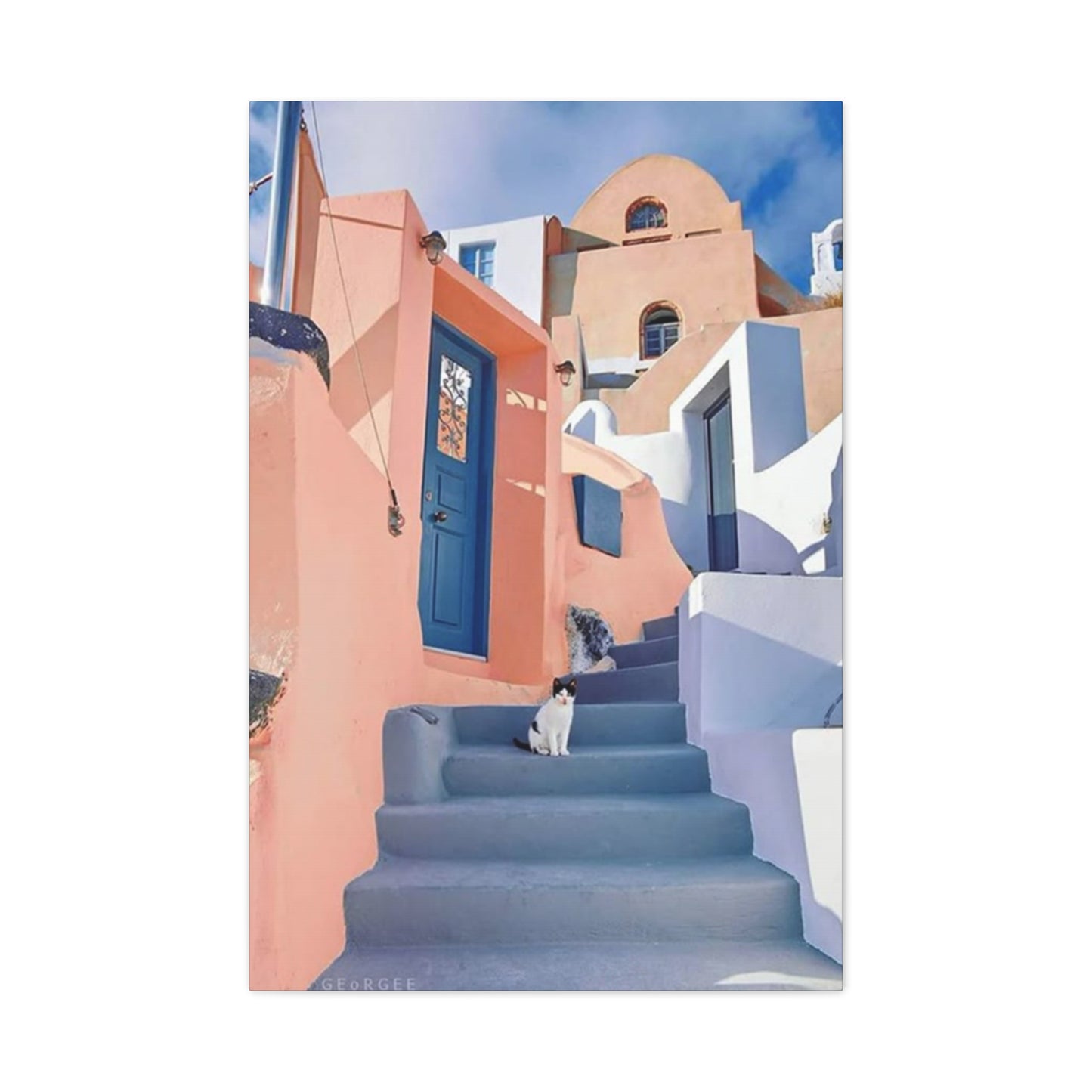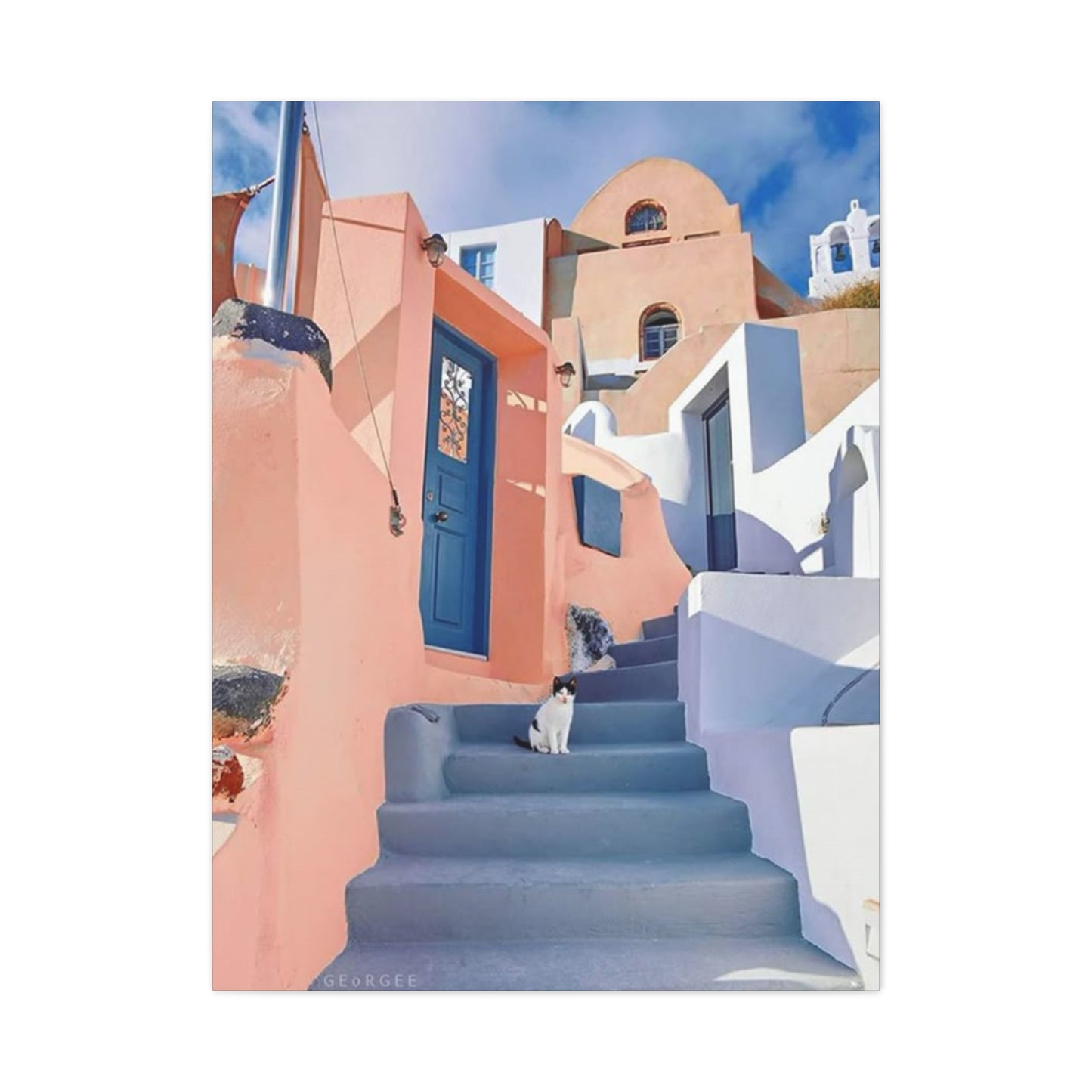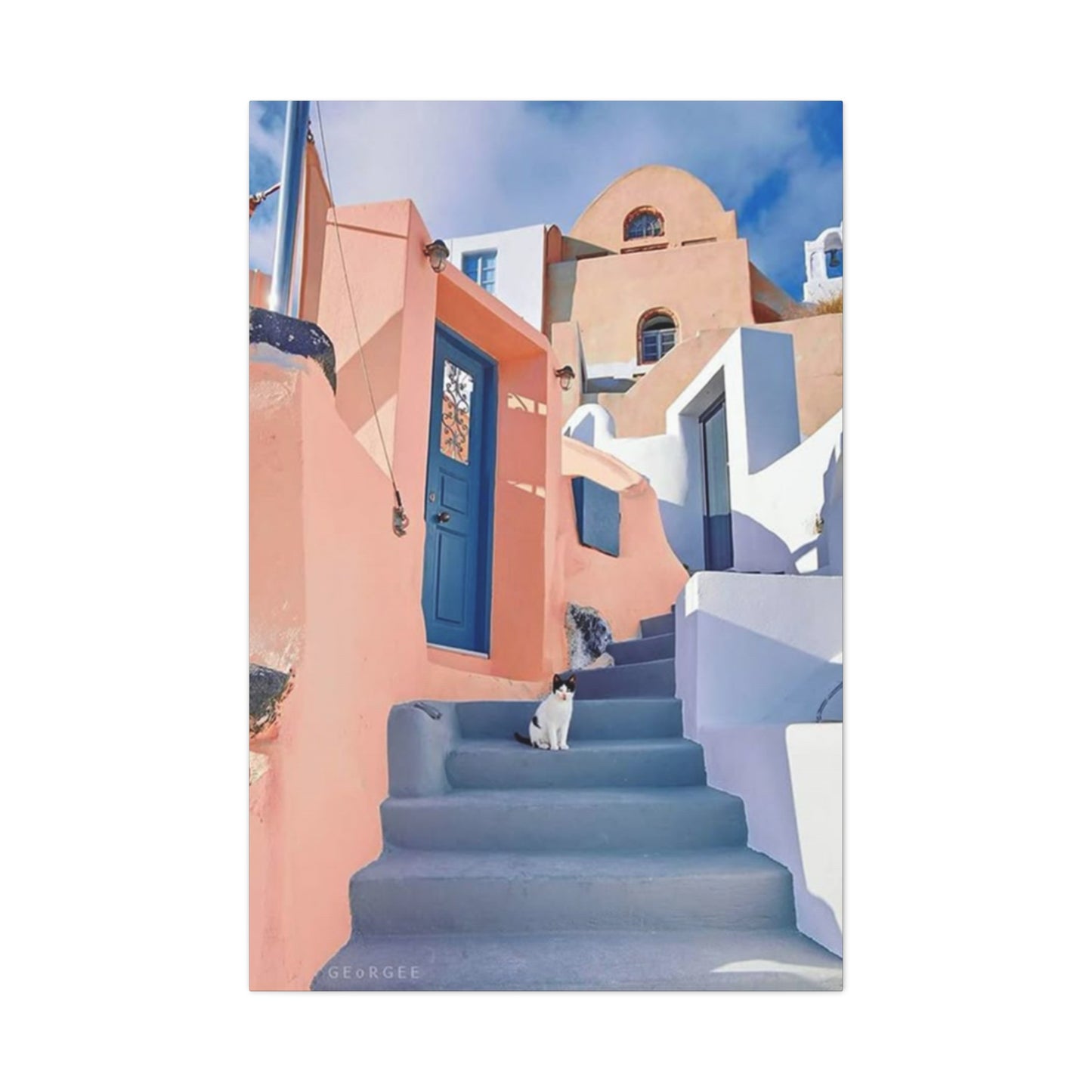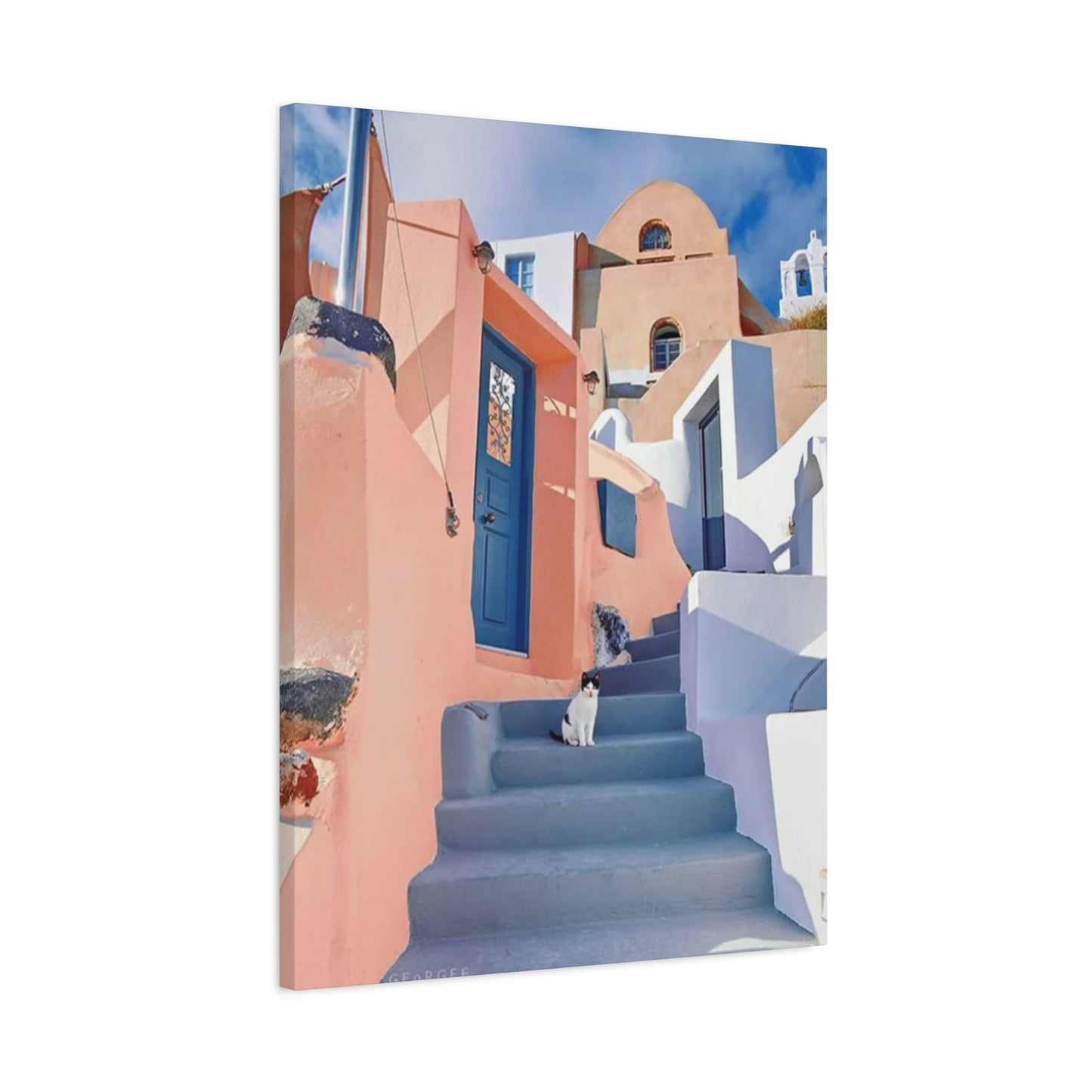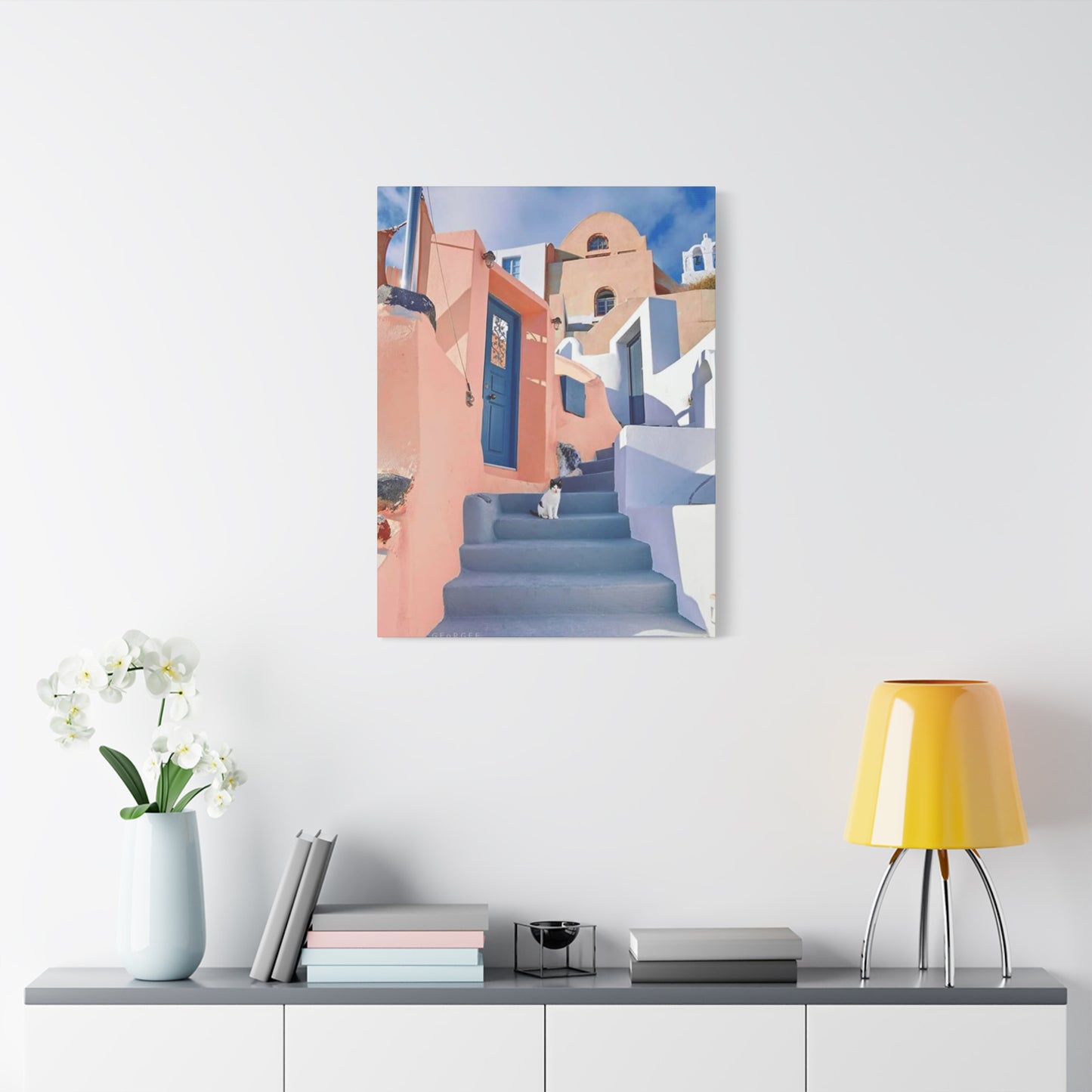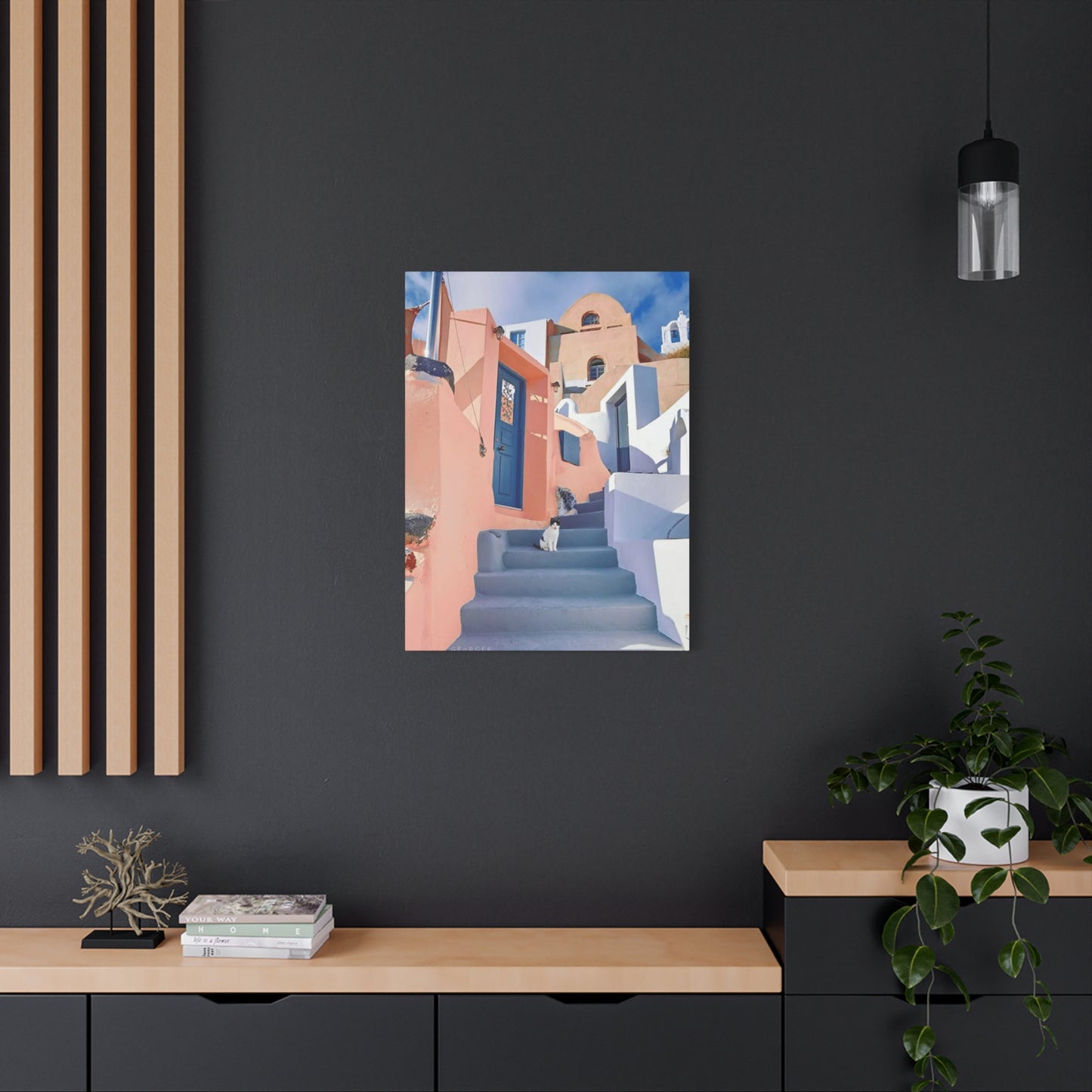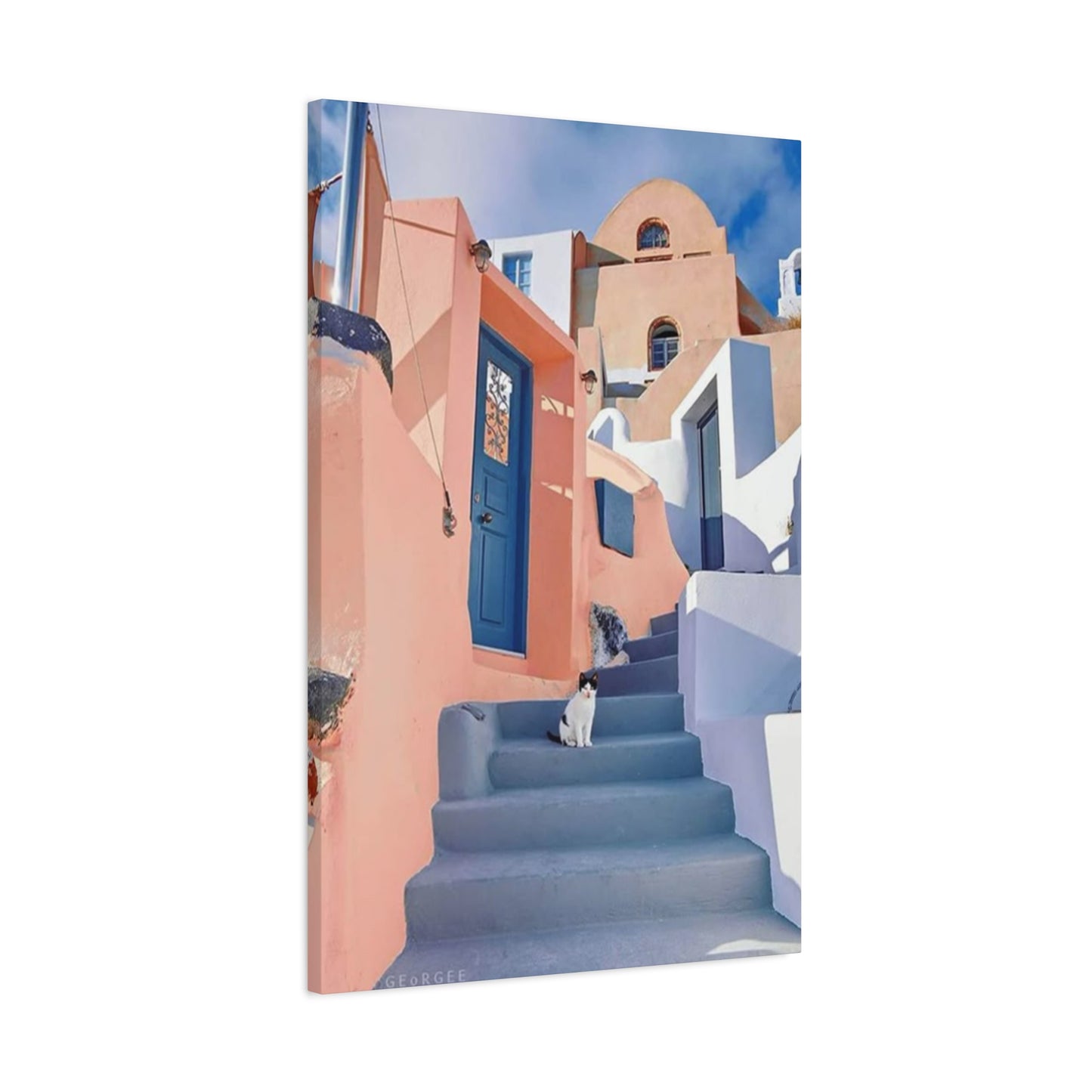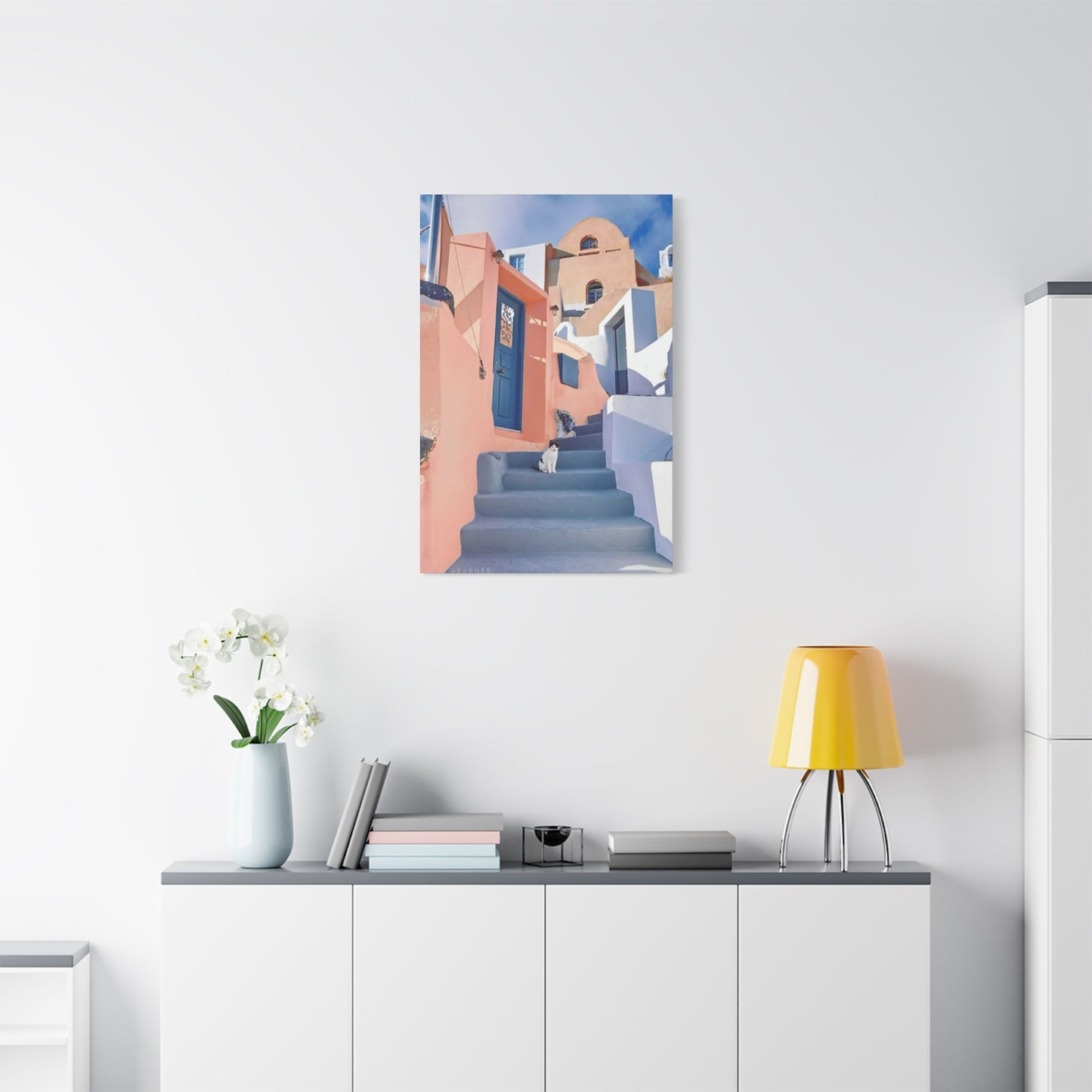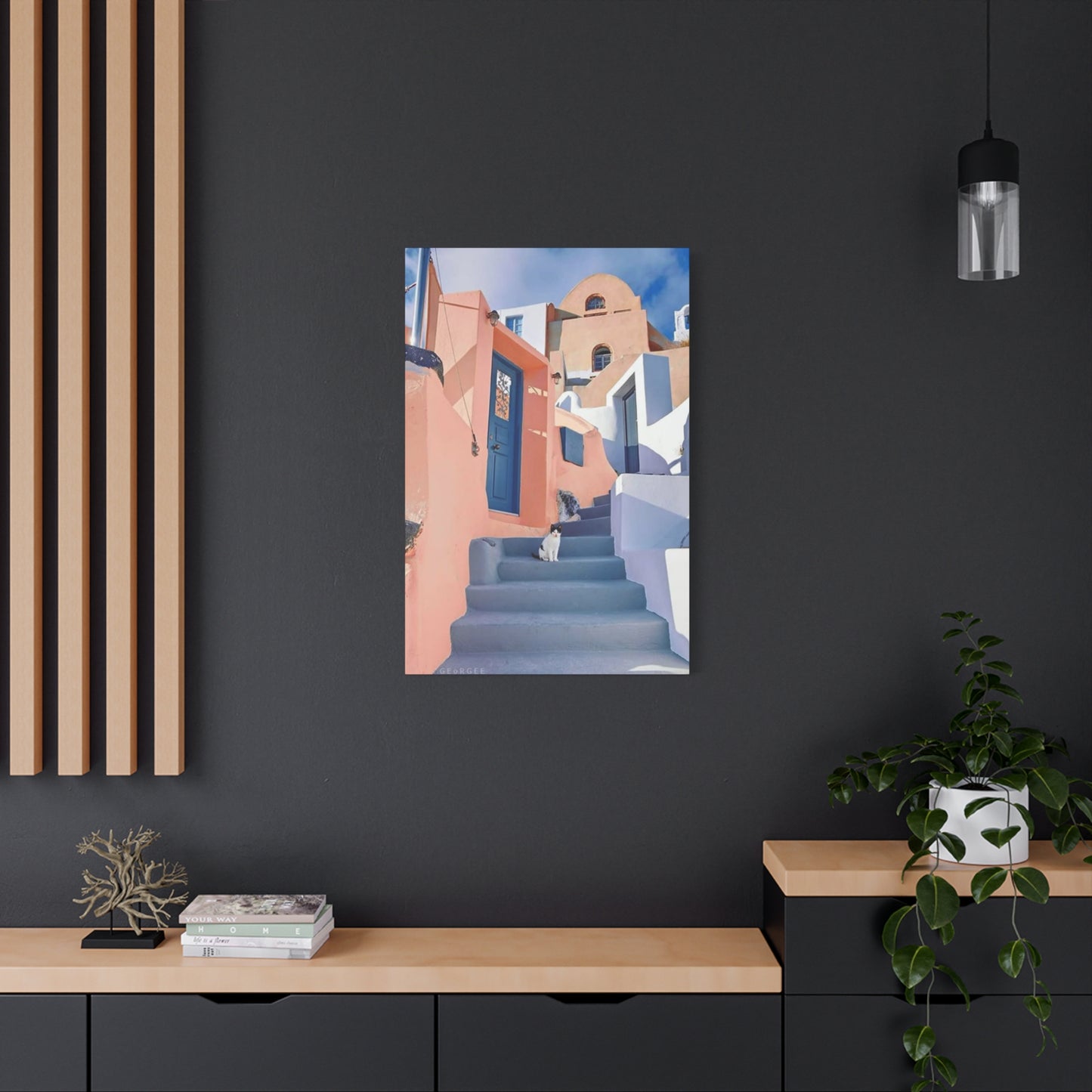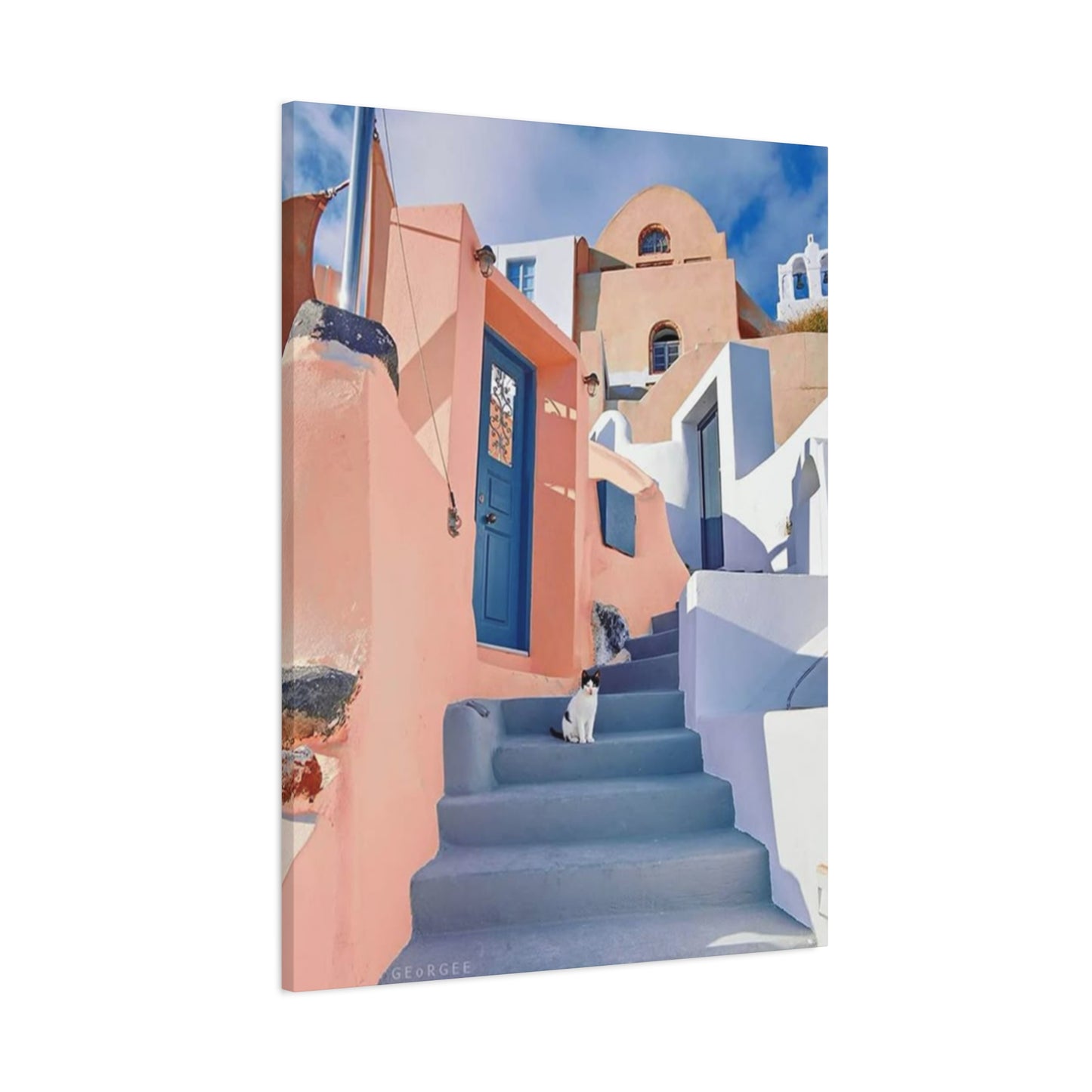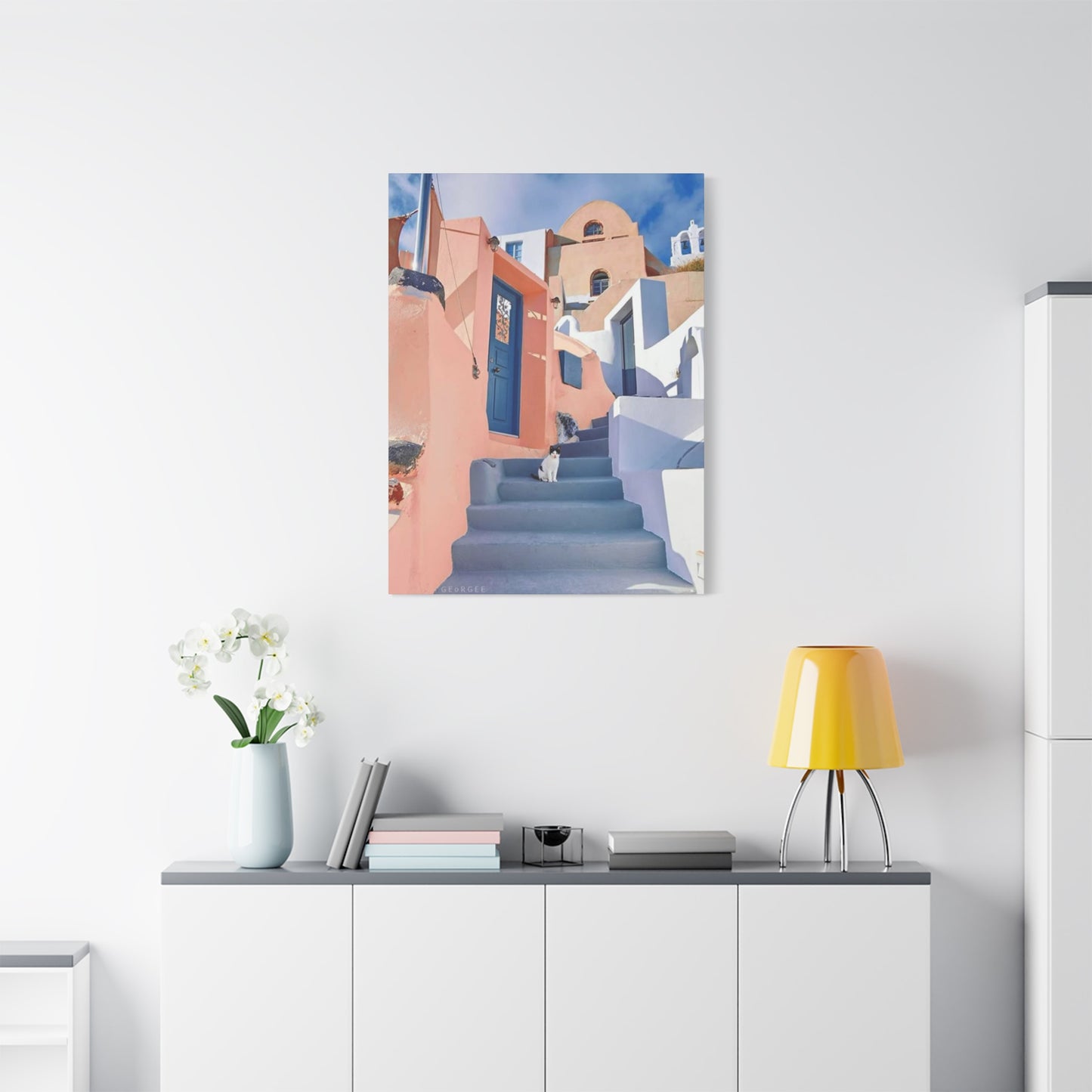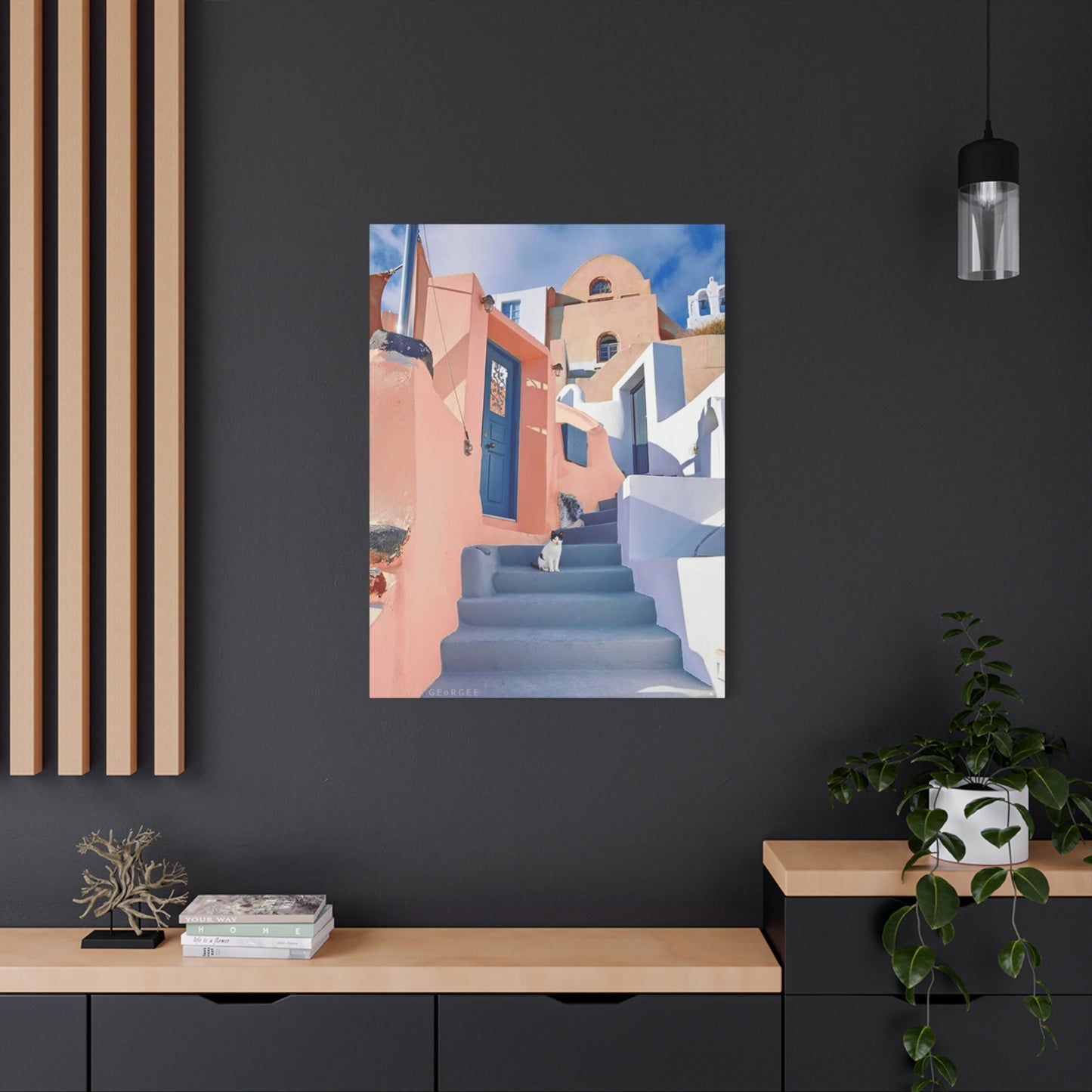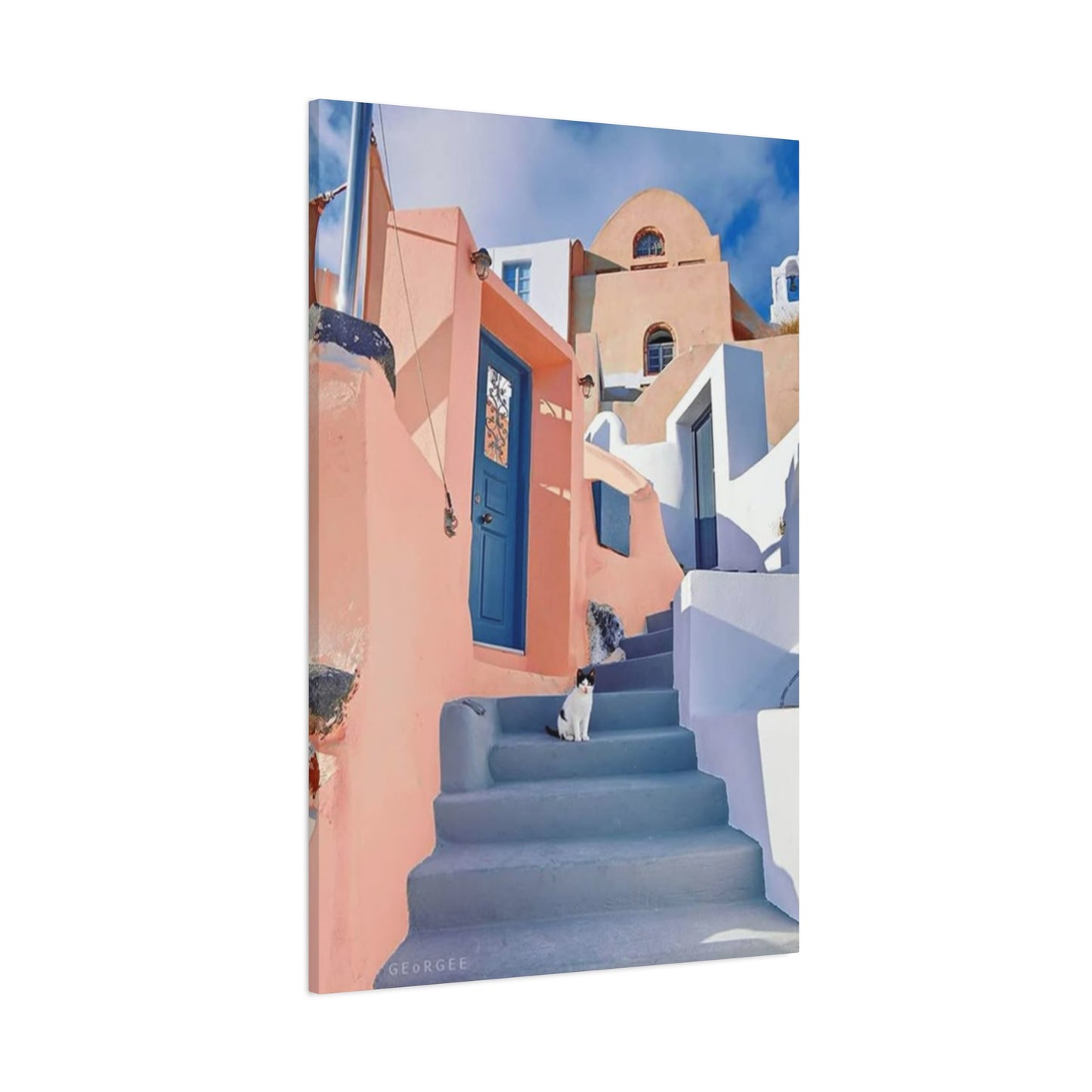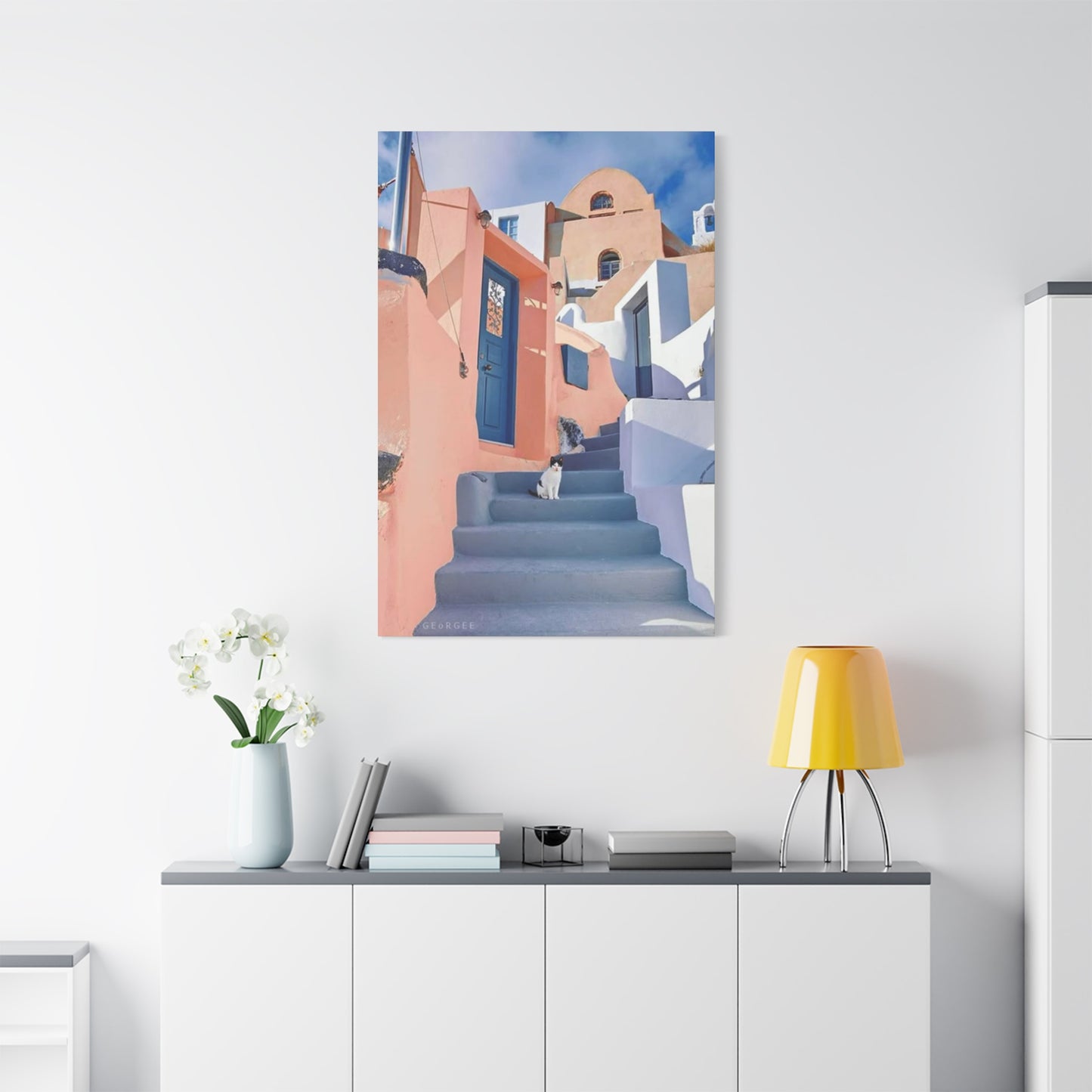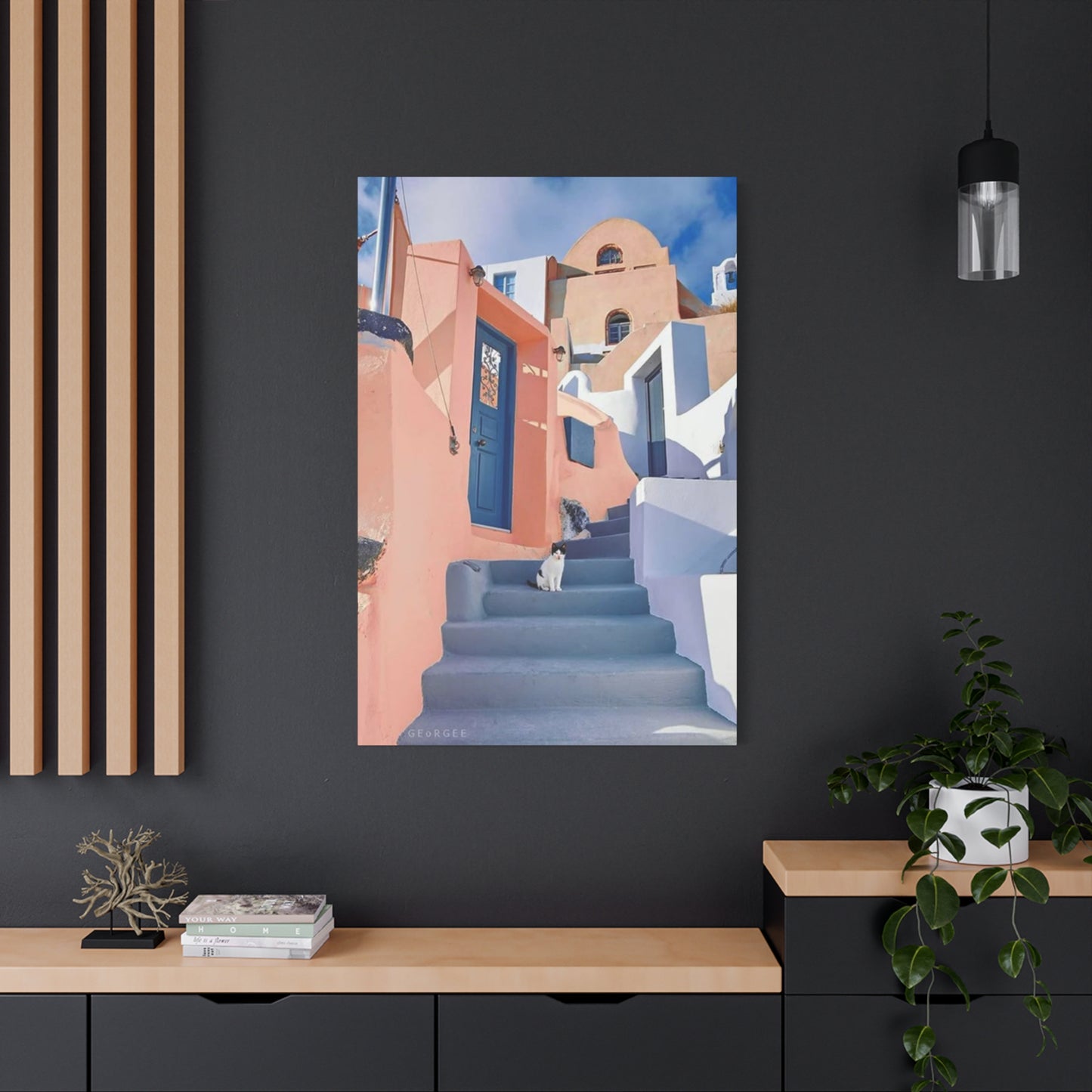Spanish Cat Wall Art: Bringing Mediterranean Charm to Your Home
Spanish cat wall art represents a captivating fusion of feline elegance and Mediterranean architectural beauty that has captured the hearts of art enthusiasts worldwide. This distinctive artistic style combines the timeless appeal of cats with the romantic charm of Spanish streets, creating pieces that transport viewers to sun-drenched cobblestone paths and historic neighborhoods. The growing popularity of this art form reflects our collective desire to bring warmth, culture, and whimsy into our living spaces through carefully curated visual elements.
The intersection of Spanish culture and feline imagery creates a unique aesthetic that speaks to both cat lovers and admirers of European architecture. These artworks often feature cats lounging on ancient stone steps, prowling through narrow alleyways, or perched on wrought iron balconies overlooking bustling plazas. The combination of these elements creates a sense of wanderlust and domestic comfort that resonates with viewers seeking to infuse their homes with character and cultural richness.
Contemporary interior design trends have embraced the concept of bringing global influences into personal spaces, and Spanish cat wall art perfectly embodies this movement. These pieces serve as conversation starters, mood enhancers, and windows into another world, all while celebrating the universal appeal of cats and the enduring beauty of Spanish architecture. The artistic movement continues to evolve, incorporating both traditional techniques and modern interpretations to create pieces that appeal to diverse aesthetic preferences.
Photographing Feline Subjects in Spanish Urban Landscapes
The art of capturing cats within Spanish street environments requires a deep understanding of both photographic technique and cultural context. Professional photographers who specialize in this niche have developed unique approaches to documenting the natural relationship between cats and their urban environments. Spanish streets provide an ideal backdrop for feline photography due to their varied textures, warm lighting conditions, and architectural diversity that creates natural frames and compositions.
The golden hour lighting that bathes Spanish streets in warm amber tones perfectly complements the natural grace of cats, creating images that feel both intimate and grand. Photographers often position themselves at street level to capture cats from their perspective, emphasizing the scale relationship between these small creatures and the monumental architecture surrounding them. The contrast between the organic curves of a cat's form and the geometric patterns of Spanish tilework or stonework creates visually compelling compositions that draw the eye and hold attention.
Street photography in Spain requires patience and cultural sensitivity, as cats often serve as unofficial mascots of local neighborhoods. Many Spanish communities have developed relationships with their resident cats, and photographers must respect these bonds while creating their art. The most successful images often capture moments of authentic behavior, whether a cat is basking in a patch of sunlight streaming through narrow streets or cautiously navigating around outdoor café tables.
Technical considerations for capturing these scenes include managing the high contrast between bright Spanish sunlight and deep shadows cast by buildings. Photographers frequently use reflectors or fill flash to illuminate cat subjects without disturbing their natural behavior. The choice of lens focal length can dramatically impact the storytelling aspect of these images, with wide-angle lenses emphasizing the architectural context and telephoto lenses isolating intimate moments.
Post-processing techniques for Spanish cat street photography often enhance the warm color palette associated with Mediterranean environments. Subtle adjustments to highlight the golden tones of stone buildings and the rich colors of painted shutters can transform a good photograph into compelling wall art. Many artists also experiment with selective color techniques, maintaining the natural coloring of cats while stylizing the background elements to create more artistic interpretations.
The Appeal of Felines in Spanish Street Photography
Cats possess an inherent photogenic quality that becomes particularly striking when set against the backdrop of Spanish architecture. Their natural grace and mysterious demeanor complement the romantic atmosphere of Spanish streets, creating images that evoke feelings of wanderlust and cultural curiosity. The way cats navigate urban environments mirrors how travelers explore new cities, with cautious curiosity and an appreciation for hidden corners and unexpected discoveries.
Spanish streets offer numerous microenvironments where cats naturally congregate, from sunny spots on ancient stone steps to shaded alcoves beneath centuries-old archways. These locations provide photographers with ready-made compositions that tell stories about both the cats and their environments. The worn textures of cobblestones, weathered wooden doors, and aged stucco walls create rich backdrops that add depth and character to feline portraits.
The cultural significance of cats in Spanish daily life adds another layer of meaning to these photographs. Unlike some cultures where cats are purely domesticated pets, Spanish cats often occupy a liminal space between wild and tame, freely roaming neighborhoods and forming loose communities. This independence and adaptability make them ideal subjects for street photography, as they embody the free-spirited nature that many associate with Spanish culture.
Color relationships play a crucial role in the success of Spanish cat street art. The neutral tones of most cats harmonize beautifully with the earth-toned palette typical of Spanish architecture. Orange tabby cats seem particularly at home against terracotta roof tiles and warm stone walls, while black cats create dramatic silhouettes against whitewashed walls and bright blue doors. These natural color combinations contribute to the visual appeal of the finished artwork.
The timing of photography sessions significantly impacts the mood and quality of Spanish cat street images. Early morning light creates long shadows and reveals architectural details while cats are often most active during these cooler hours. Late afternoon provides the warm, golden lighting that has become synonymous with romantic Spanish imagery. Evening photography can capture cats as they emerge for their nocturnal activities, often resulting in more mysterious and atmospheric images.
Interior Design Applications for Cat-Themed Spanish Street Prints
Integrating cat-themed Spanish street prints into interior design schemes requires careful consideration of scale, placement, and complementary elements. These artworks work exceptionally well as focal points in rooms designed with Mediterranean or European influences, but they can also add unexpected charm to more contemporary settings. The key lies in understanding how the colors, textures, and mood of the artwork will interact with existing décor elements.
Large-scale prints work beautifully as statement pieces above sofas, beds, or dining areas, where their detailed compositions can be appreciated from a comfortable viewing distance. The horizontal format typical of street scenes makes them ideal for filling wall space above low furniture pieces. When selecting sizes, consider the proportional relationship between the artwork and the surrounding space to ensure visual balance and prevent the piece from overwhelming or disappearing within the room.
Color coordination becomes crucial when incorporating these prints into existing color schemes. The warm earth tones typical of Spanish architecture artwork pair naturally with cream, beige, and warm white paint colors. Accent colors can be drawn from the prints themselves, with terracotta planters, blue ceramic accessories, or wrought iron elements echoing the architectural details captured in the photographs. This approach creates a cohesive design story that extends beyond the artwork itself.
Layering textures throughout the room can enhance the tactile appeal suggested by the textured surfaces often featured in Spanish street photography. Natural materials like rough-hewn wood, woven textiles, and ceramic pottery can reinforce the Mediterranean aesthetic while creating a more immersive environment. The goal is to create a space that feels transported rather than simply decorated with Spanish-themed elements.
Lighting considerations for displaying these prints should take inspiration from the natural lighting conditions captured in the original photographs. Warm-toned LED lighting or incandescent bulbs can enhance the golden qualities of Spanish street scenes, while avoiding harsh fluorescent lighting that might diminish the romantic atmosphere. Picture lighting or strategically placed accent lights can highlight the artwork while creating ambiance throughout the room.
Sourcing Authentic Spanish Cat Wall Art
Finding high-quality Spanish cat wall art requires knowledge of reputable sources and an understanding of what constitutes authentic artistic vision. Local Spanish artists who specialize in street photography or urban landscapes often produce the most compelling pieces, as they bring intimate knowledge of their subjects and genuine cultural perspective to their work. These artists understand the subtleties of light, shadow, and architectural detail that make Spanish streets so photographically appealing.
Online galleries and art marketplaces have made it easier to access work by Spanish artists from around the world. When evaluating potential purchases, look for artists who provide detailed information about their photographic process, location specifics, and printing methods. High-resolution images of the artwork should clearly show the quality of detail and color reproduction, particularly important factors for photography-based wall art where sharpness and tonal accuracy are crucial.
Print quality standards vary significantly among different suppliers, making it essential to understand the technical specifications of any potential purchase. Museum-quality prints on archival paper with fade-resistant inks ensure longevity and color accuracy over time. Many professional photographers offer prints in multiple sizes and finishes, allowing buyers to select options that best suit their specific display requirements and budget constraints.
Custom printing services provide another avenue for obtaining Spanish cat wall art, particularly for buyers who have discovered specific images through online sources or social media platforms. However, it's crucial to ensure proper licensing agreements are in place before reproducing any photographer's work. Many artists offer licensing for personal use at reasonable rates, while others sell direct-to-consumer through their own websites or authorized retailers.
Gallery showings and art fairs, particularly those focusing on travel photography or European themes, often feature Spanish street photography that includes feline subjects. These events provide opportunities to see prints in person, assess quality firsthand, and often meet the artists themselves. The personal connection and story behind the artwork can significantly enhance its value and meaning within your home environment.
Creating Warmth Through Feline Street Art in Spanish-Inspired Interiors
Spanish cat wall art possesses an innate ability to infuse spaces with warmth and comfort, largely due to the emotional associations we have with both cats and the romantic ideal of Spanish culture. The combination of feline companionship imagery and sun-soaked architectural settings creates an atmosphere of contentment and wanderlust that can transform the mood of any room. This emotional resonance makes such artwork particularly effective in spaces designed for relaxation and social gathering.
The warm color palette typical of Spanish street photography naturally contributes to creating cozy environments. Golden hour lighting captured in these images brings the feeling of Mediterranean sunshine indoors, particularly valuable in regions with limited natural light or during darker seasons. The presence of cats in these scenes adds an element of domestic comfort that balances the exotic appeal of foreign architecture, creating artwork that feels both adventurous and homey.
Placement strategies for maximizing the warming effect of Spanish cat art involve considering sight lines and daily routines within the home. Positioning these pieces where they'll be frequently noticed during daily activities ensures their positive emotional impact is regularly experienced. Entryways, breakfast nooks, and reading corners are particularly effective locations where the artwork can provide moments of visual pleasure throughout the day.
The scale and framing of Spanish cat prints can significantly influence their warming effect within a space. Larger pieces tend to create more immersive experiences, while collections of smaller prints can create intimate vignettes that invite closer inspection. The frame selection should complement rather than compete with the artwork, with natural wood tones or wrought iron-inspired frames often enhancing the Spanish aesthetic without overwhelming the central image.
Complementary decorative elements can amplify the warming effect of Spanish cat wall art throughout a room. Soft textiles in complementary colors, warm-toned lighting fixtures, and natural materials all contribute to creating an environment that echoes the comfort and appeal captured in the artwork. The goal is to create a space that feels cohesive and intentionally designed while allowing the wall art to serve as an inspiring focal point.
Feline Significance in Spanish Cultural Expression and Artistic Traditions
Cats have maintained a complex and evolving relationship with Spanish culture throughout history, influencing artistic expression across multiple mediums and time periods. From ancient Iberian settlements to contemporary urban environments, cats have served various roles in Spanish society that extend beyond simple companionship. Understanding this cultural context enhances appreciation for contemporary Spanish cat wall art and provides deeper meaning for collectors and enthusiasts.
Historical records suggest that cats arrived in Spain with Phoenician traders and were later valued by Romans for their practical role in controlling rodent populations. During the Islamic period in Spanish history, cats enjoyed elevated status due to their positive treatment in Islamic tradition, and this cultural appreciation persisted through various political and social changes. Medieval Spanish literature includes numerous references to cats, often portraying them as symbols of independence and mystery.
The artistic representation of cats in Spanish culture has evolved significantly over centuries, from utilitarian depictions in medieval manuscripts to more romanticized portrayals in modern photography and painting. Traditional Spanish ceramics and tilework sometimes feature feline motifs, while folk art traditions have long included cat imagery in various decorative applications. This historical precedent provides context for contemporary artists who incorporate cats into their interpretations of Spanish life and culture.
Regional variations in cat culture across Spain add richness to contemporary artistic interpretations. Andalusian cats, for example, are often depicted against the white-washed architecture typical of that region, while Catalonian street cats might be shown navigating the unique Gothic Quarter of Barcelona. These regional differences provide artists with diverse aesthetic possibilities while maintaining cultural authenticity.
Modern Spanish artists who focus on urban life and street photography often include cats as natural elements of their compositions. These contemporary works continue the tradition of documenting daily life while acknowledging the ongoing presence of cats in Spanish urban environments. The resulting artwork serves both as aesthetic objects and as cultural documentation of a continuing relationship between humans and cats in Spanish society.
Handcrafted Cat Wall Art Projects Inspired by Spanish Streets
Creating original Spanish cat wall art through DIY projects allows for personal expression while developing artistic skills and cultural appreciation. These projects can range from simple photography prints to complex mixed-media compositions that incorporate multiple artistic techniques. The key to successful DIY Spanish cat art lies in understanding the essential visual elements that make these pieces compelling and learning to recreate or reinterpret them using available materials and skills.
Photography-based DIY projects represent the most accessible entry point for creating Spanish cat wall art. Whether working with personal travel photographs or stock images with appropriate licensing, the focus should be on post-processing techniques that enhance the atmospheric qualities typical of successful Spanish street scenes. Digital editing software can help adjust color balance, contrast, and saturation to achieve the warm, inviting aesthetic associated with Mediterranean imagery.
Mixed-media approaches allow for more creative interpretation and personalization of Spanish cat themes. Combining photography with paint, fabric, or found materials can create unique textural effects that reference the weathered surfaces and varied materials typical of Spanish architecture. Techniques such as collage, photo transfer, and selective painting can transform simple photographs into more complex artistic statements.
Painting and drawing projects inspired by Spanish cat photography offer opportunities to develop traditional artistic skills while exploring personal interpretations of the subject matter. Watercolor techniques work particularly well for capturing the soft, atmospheric qualities of Spanish light, while acrylic paints allow for more vibrant color interpretations. Pencil or charcoal drawings can emphasize the textural contrasts between cat fur and architectural surfaces.
Digital art creation using tablets and specialized software provides another avenue for DIY Spanish cat wall art. These tools allow for experimentation with various artistic styles, from photorealistic rendering to stylized interpretations that emphasize particular aesthetic elements. The ability to easily revise and refine digital artwork makes it an attractive option for artists still developing their skills or exploring different creative directions.
Professional Framing Considerations for Cat and Street Art Photography
The presentation of Spanish cat wall art significantly influences its visual impact and longevity, making proper framing an essential consideration for serious collectors and decorators. Professional framing involves multiple technical and aesthetic decisions that can enhance or detract from the artwork's effectiveness within its intended environment. Understanding these factors helps ensure that Spanish cat prints achieve their maximum artistic and decorative potential.
Matting choices play a crucial role in isolating and highlighting photographic prints while providing visual breathing room around the central image. Neutral-toned mats in cream, warm white, or light beige typically complement the warm color palette of Spanish street photography without competing for attention. The width of matting borders should be proportional to the image size, with larger prints generally requiring wider mats to maintain visual balance.
Frame materials and finishes should complement rather than overwhelm the artwork while supporting the overall aesthetic goals of the display. Natural wood frames in warm tones echo the organic elements often present in Spanish street scenes, while metal frames in bronze or copper tones can reference architectural details. The frame profile should be substantial enough to support the artwork's presence without becoming the dominant visual element.
Glass selection involves balancing protection requirements with visual clarity and reflection control. Museum glass offers superior protection and clarity but comes at a higher cost, while standard picture glass provides adequate protection for most residential applications. Anti-reflective coatings become particularly important when artwork will be displayed in areas with strong natural or artificial lighting that might create distracting reflections.
Conservation considerations are especially important for photographic artwork, which can be vulnerable to fading and deterioration over time. Acid-free matting materials, UV-filtering glass, and proper backing materials all contribute to preserving the artwork's appearance and value. Temperature and humidity control in display areas also play important roles in long-term preservation, particularly for high-quality prints intended as long-term investments.
Size and proportion relationships between artwork, matting, and frames require careful consideration to achieve visually pleasing results. The golden ratio can serve as a guide for determining optimal proportions, while practical considerations such as available wall space and viewing distances influence final sizing decisions. Multiple prints intended as a coordinated display require additional planning to ensure consistent presentation standards across all pieces.
Architectural Elements and Feline Subjects in Spanish-Themed Wall Art
The architectural vocabulary of Spanish streets provides rich visual material that enhances the appeal of cat-focused wall art. Understanding these architectural elements and how they interact with feline subjects helps both artists and collectors appreciate the complex visual relationships that make Spanish cat art so compelling. The combination of organic feline forms with geometric architectural patterns creates dynamic compositions that engage viewers on multiple levels.
Stone and stucco surfaces typical of Spanish architecture provide textural contrasts that highlight the smooth curves of cat anatomy. Weathered surfaces tell stories of time and history while creating varied backgrounds that prevent cat subjects from appearing isolated or artificially placed. The irregular patterns of aged surfaces also complement the organic nature of cats, creating harmonious rather than competing visual elements.
Wrought iron details, including balconies, window grilles, and decorative elements, add linear complexity to compositions while providing perching and exploration opportunities for cat subjects. The interplay between curved ironwork and feline forms creates visual rhymes that strengthen compositional unity. These architectural details also serve practical purposes in street photography, often providing natural framing elements that focus attention on cat subjects.
Color relationships between Spanish architectural elements and cat coloring create natural harmonies that contribute to the appeal of this art form. The warm terracotta and ochre tones typical of Spanish buildings complement the colors of ginger and brown tabbies, while whitewashed walls provide striking contrasts for darker cats. These natural color relationships help explain why Spanish cat art feels inherently pleasing and balanced.
Scale relationships between cats and architectural elements influence the emotional impact of Spanish street art. Cats dwarfed by massive stone walls or cathedral doorways emphasize themes of exploration and adventure, while cats that appear well-proportioned to their surroundings suggest comfort and belonging. Artists can manipulate these scale relationships through lens choice and positioning to create different narrative implications.
Window and doorway elements serve as natural frames within frames, creating compositional depth while suggesting stories about the relationship between indoor and outdoor spaces. Cats photographed near these transitional architectural elements often embody themes of curiosity and boundary-crossing that resonate with viewers' own desires for exploration and adventure.
Symbolic Meanings of Cats in Spanish Street Photography
The symbolic content of Spanish cat street photography extends beyond simple documentation of urban life, tapping into deeper cultural and psychological meanings that contribute to the emotional resonance of this art form. Cats as symbols carry multiple layers of meaning across different cultures and historical periods, and their presence in Spanish street scenes activates these symbolic associations while adding new cultural-specific interpretations.
Independence and freedom represent primary symbolic themes associated with cats in Spanish street photography. The sight of cats navigating urban environments without human direction resonates with cultural values that prize individual autonomy and self-determination. Spanish culture has historically celebrated individualism and personal expression, making cats natural symbols for these cultural values when depicted in Spanish settings.
Mystery and secrets form another symbolic layer in Spanish cat photography, drawing on both the inherent mysterious nature of cats and the hidden corners and narrow passages typical of Spanish street environments. Cats exploring shadowy alleyways or peering around ancient corners suggest unknown stories and hidden experiences that viewers can imagine and project their own narratives onto.
Adaptation and survival themes emerge from observing cats thriving in urban environments that present various challenges and opportunities. Spanish cities, with their mix of ancient and modern elements, provide complex environments where cats must navigate historical architecture alongside contemporary urban realities. This adaptability mirrors human experiences of cultural change and personal resilience.
The liminal nature of cats, existing between wild and domestic states, parallels the transitional spaces often featured in Spanish street photography. Courtyards, doorways, and street-level balconies represent spaces between public and private, exterior and interior. Cats photographed in these transitional zones embody the concept of existing between defined categories, appealing to viewers who may feel similarly positioned in their own lives.
Timelessness represents another important symbolic element in Spanish cat photography. Cats have inhabited Spanish streets for centuries, and contemporary photographs of cats in historical settings create connections across time periods. This temporal bridging allows viewers to imagine continuity and connection with past inhabitants of the same spaces.
Black Cats in Spanish Street Art: Cultural Interpretations and Artistic Impact
Black cats occupy a unique position in Spanish street art, carrying complex cultural associations that vary between regions and historical periods. Unlike some cultures where black cats are primarily associated with superstition, Spanish culture has developed more nuanced relationships with these animals that influence their artistic representation and symbolic meaning in contemporary street art.
Historical perspectives on black cats in Spain reflect the complex religious and cultural influences that have shaped the country over centuries. While medieval European superstitions about black cats did reach Spain, the Islamic influence during the Al-Andalus period brought different cultural attitudes that were more favorable toward cats in general. This historical complexity provides contemporary artists with rich symbolic material to explore in their work.
Visual impact considerations make black cats particularly compelling subjects for Spanish street photography. The high contrast between black cat silhouettes and the light-colored architecture typical of many Spanish regions creates dramatic compositions that draw immediate attention. This natural contrast allows photographers to create striking images even with simple compositions, making black cats valuable subjects for artistic exploration.
Lighting challenges and opportunities arise when photographing black cats in Spanish street environments. The strong Mediterranean sun can create harsh shadows that obscure feline features, requiring photographers to master techniques for revealing detail in dark subjects without losing the dramatic contrast that makes these images appealing. Successful black cat photography often involves finding locations with reflected light or shooting during golden hour when lighting is more favorable.
Symbolic interpretations of black cats in Spanish street art often emphasize themes of elegance, sophistication, and urban adaptation. Rather than focusing on superstitious associations, contemporary Spanish artists tend to present black cats as confident urban inhabitants who navigate their environments with grace and purpose. This positive interpretation aligns with modern Spanish cultural attitudes and creates artwork with broader appeal.
Compositional strategies for featuring black cats in Spanish street scenes often emphasize silhouette effects and shape relationships rather than detailed texture work. The simplified forms created by backlighting or high contrast situations can create almost graphic design-like effects that appeal to contemporary aesthetic sensibilities while maintaining the documentary authenticity of street photography.
Vibrant Spanish Streets as Artistic Backdrops for Feline Subjects
The kaleidoscope of colors found in Spanish street environments provides photographers and artists with an endless palette of backdrop possibilities for creating compelling cat art. From the brilliant blues and whites of Andalusian villages to the warm earth tones of Castilian cities, Spanish architecture offers color combinations that naturally complement feline subjects while creating visually striking compositions that capture the essence of Mediterranean culture.
Regional color variations across Spain provide artists with diverse aesthetic options for creating location-specific cat art. The white villages of Andalusia create high-contrast backgrounds that make cats appear almost sculptural against stark architectural forms. The golden sandstone of Salamanca provides warm, harmonious backdrops that complement orange and brown cat coloring. The colorful tiles and painted surfaces of Valencia create vibrant, energetic compositions that celebrate both architectural tradition and feline grace.
Seasonal color changes in Spanish street environments offer photographers multiple opportunities to capture the same subjects against varying backdrops throughout the year. Spring brings colorful flower displays that spill from balconies and line narrow streets, creating natural color accents that frame cat subjects. Summer's intense light saturates colors and creates deep shadows that add dramatic contrast to compositions. Autumn introduces subtle color shifts in natural elements, while winter's softer light can reveal architectural details often obscured during brighter seasons.
Color theory applications in Spanish cat photography involve understanding how different color combinations affect emotional responses and visual impact. Complementary color relationships, such as orange cats against blue doors or windows, create vibrant, energetic compositions that immediately attract attention. Analogous color schemes, featuring cats that harmonize with their architectural backgrounds, create more subtle, contemplative images that reward closer observation.
Artificial color elements in Spanish streets, including painted doors, decorative tiles, advertising signs, and seasonal decorations, add contemporary layers to historically rooted architectural environments. These modern color additions provide opportunities for creating cat photography that feels current and relevant while maintaining connection to traditional Spanish aesthetic values. The challenge lies in balancing these elements to create cohesive rather than chaotic compositions.
Post-processing color enhancement techniques allow photographers to emphasize the natural color relationships present in Spanish street environments while maintaining authenticity. Selective color adjustments can enhance the warm tones of stone architecture or intensify the blues of painted wooden doors without creating artificial-looking results. The goal is to amplify the emotional impact of natural color relationships rather than imposing arbitrary color schemes.
Atmosphere Creation Through Cat and Spain Wall Prints
Spanish cat wall art excels at creating specific atmospheric conditions within interior spaces, transforming rooms through the emotional associations and visual qualities inherent in these images. The combination of feline subjects and Spanish architectural settings evokes feelings of warmth, relaxation, and cultural sophistication that can significantly influence the mood and character of any room where such artwork is displayed.
Ambiance control through strategic artwork placement allows homeowners to create different emotional zones within their living spaces. Spanish cat prints in bedrooms can promote feelings of serenity and escape, while similar artwork in living areas encourages social interaction and conversation. The key lies in understanding how the specific qualities of each piece will interact with the intended function of each space.
Size relationships between artwork and room proportions significantly influence atmospheric impact. Large-scale Spanish cat prints can create immersive environments that transport viewers to Mediterranean streets, while smaller pieces create intimate moments of visual pleasure that complement rather than dominate their surroundings. The goal is to achieve proportional harmony that enhances rather than overwhelms the existing spatial relationships.
Color temperature considerations involve understanding how the warm tones typical of Spanish cat photography will interact with existing lighting conditions and color schemes. Warm-toned LED lighting can enhance the golden qualities present in Spanish street scenes, while cooler lighting might diminish their emotional appeal. The color temperature of both artificial and natural light sources should complement the inherent warmth of Spanish-themed artwork.
Clustering effects occur when multiple Spanish cat prints are displayed together, creating gallery wall arrangements that amplify the atmospheric impact of individual pieces. Successful clustering requires careful attention to size relationships, spacing, and thematic consistency while maintaining visual variety that prevents monotony. The arrangement should tell a cohesive story while providing enough visual interest to reward repeated viewing.
Seasonal adaptability allows Spanish cat wall art to maintain its atmospheric effectiveness throughout the year. During darker winter months, these warm-toned images can provide psychological comfort and visual warmth that counteracts seasonal depression. Summer displays might emphasize the cooling shadows and architectural shelter depicted in many Spanish street scenes, creating visual relief from heat and brightness.
Courtyard Cats: Traditional Spanish Architectural Themes in Wall Art
Spanish courtyards represent one of the most distinctive and photogenic architectural features associated with Spanish culture, providing intimate, enclosed environments where cats naturally congregate and photographers can capture compelling images. These spaces combine architectural beauty with domestic scale, creating perfect settings for cat photography that feels both exotic and accessible to viewers from other cultural backgrounds.
Architectural evolution of Spanish courtyards reflects the complex cultural history of the Iberian Peninsula, incorporating Roman, Islamic, and Christian design influences into cohesive spatial concepts. Contemporary courtyard cats inherit these historically layered environments, creating opportunities for artists to reference multiple cultural traditions within single images. The resulting artwork carries cultural depth that extends beyond simple decorative appeal.
Lighting conditions within Spanish courtyards create unique photographic opportunities that differ significantly from open street environments. The controlled lighting within enclosed spaces often produces soft, even illumination that flatters both feline subjects and architectural details. Filtered sunlight streaming through overhead openings creates dramatic lighting effects that add visual interest while maintaining the intimate scale that makes courtyard photography appealing.
Privacy and intimacy themes emerge naturally in courtyard cat photography, as these enclosed spaces suggest shelter, security, and domestic comfort. Cats photographed within courtyards often appear more relaxed and natural than those captured in busy street environments, creating images that emphasize themes of home and belonging rather than urban adventure and exploration.
Plant and architectural integration within Spanish courtyards adds layers of visual complexity that enhance cat photography. Potted plants, climbing vines, and traditional garden elements create natural frames and background textures that complement feline subjects. The combination of natural and architectural elements within controlled spaces provides photographers with rich compositional possibilities.
Water features, including traditional fountains and decorative pools, add both visual and audio elements to Spanish courtyards while creating natural gathering points for cats seeking water or simply enjoying cooling effects. These features provide focal points for compositions while adding cultural authenticity to courtyard cat photography.
Mediterranean Atmosphere Through Feline Wall Art
The Mediterranean aesthetic encompasses more than just Spanish culture, but Spanish cat wall art serves as an effective gateway for creating broader Mediterranean atmosphere within interior spaces. The warm color palette, relaxed lifestyle associations, and architectural elements common to Mediterranean cultures all contribute to the effectiveness of Spanish cat art in evoking this broader regional character.
Cultural connectivity across Mediterranean regions allows Spanish cat art to resonate with design themes inspired by Italian, Greek, French, and North African cultures. The shared architectural vocabulary of stone construction, tile roofing, and courtyard design creates visual consistency that allows Spanish cat photography to complement décor elements from other Mediterranean sources.
Climate associations embedded in Spanish cat photography automatically evoke the warm, dry conditions typical of Mediterranean environments. Images of cats seeking shade beneath architectural overhangs or basking in patches of filtered sunlight suggest the sun-soaked leisure lifestyle that many associate with Mediterranean culture. These climate associations can provide psychological comfort in non-Mediterranean locations.
Lifestyle implications of Mediterranean culture, including emphasis on outdoor living, family gathering, and leisurely daily rhythms, align naturally with the relaxed demeanor typically displayed by cats in Spanish street photography. This lifestyle compatibility makes Spanish cat art particularly effective in spaces designed for relaxation and social interaction.
Material authenticity in Mediterranean-inspired interiors can be enhanced through Spanish cat wall art that features traditional building materials including stone, tile, and wrought iron. Even when actual Mediterranean materials aren't feasible in a decorating project, artwork that features these elements can provide visual references that support the desired aesthetic direction.
Seasonal adaptability of Mediterranean themes allows Spanish cat wall art to maintain its effectiveness year-round while providing particular psychological benefits during colder months when the warm associations of Mediterranean culture offer welcome contrast to local weather conditions.
Vintage Aesthetics Versus Contemporary Interpretations in Spanish Cat Wall Art
The stylistic approach chosen for Spanish cat wall art significantly influences its decorative effectiveness and cultural authenticity. Vintage-inspired treatments often emphasize the historical continuity of cats within Spanish urban environments, while contemporary interpretations may focus on current urban realities or artistic innovation. Understanding these stylistic options helps collectors make informed choices that align with their aesthetic preferences and decorating goals.
Historical photography techniques can be applied to contemporary Spanish cat images to create vintage aesthetic effects that suggest timeless cultural continuity. Sepia toning, grain enhancement, and contrast adjustments can transform modern digital photographs into images that feel connected to earlier photographic traditions. These treatments work particularly well with subjects and settings that reference historical architectural elements.
Contemporary photographic approaches to Spanish cat street art often emphasize technical excellence and color accuracy while maintaining documentary authenticity. High-resolution digital capture allows for detailed reproduction of architectural textures and feline characteristics that weren't possible with earlier photographic technologies. Contemporary processing techniques can enhance natural color relationships without creating obviously artificial effects.
Artistic interpretation ranges from strictly documentary approaches that prioritize accurate representation to highly stylized treatments that emphasize particular aesthetic elements. Some contemporary artists apply digital painting techniques to photographic foundations, creating hybrid works that combine photographic accuracy with painterly expression. These interpretive approaches can create unique artistic statements while maintaining connection to Spanish cultural sources.
Market preferences for vintage versus contemporary Spanish cat art vary among different demographic groups and decorating contexts. Traditional interiors may benefit from vintage-inspired treatments that complement existing historical elements, while contemporary spaces might be better served by modern interpretations that feel current and relevant. Understanding these market dynamics helps both artists and collectors make strategic choices.
Technical considerations differ between vintage and contemporary approaches, with vintage effects often requiring specialized knowledge of historical photographic processes or digital techniques that simulate these effects. Contemporary approaches may demand different technical skills related to high-resolution capture, color management, and modern printing techniques.
Spanish Cat Wall Art Popularity in Contemporary Home Design
The growing popularity of Spanish cat wall art reflects broader trends in contemporary interior design that prioritize global cultural influences, personal expression, and emotional connection to living spaces. This art form successfully combines multiple appealing elements including cultural sophistication, animal companionship, and travel inspiration in formats that work well within modern home environments.
Design trend analysis reveals increasing consumer interest in artwork that tells stories and creates emotional connections rather than simply providing visual decoration. Spanish cat wall art succeeds in this market because it naturally suggests narratives about travel, cultural exploration, and the universal appeal of cats. These narrative elements create personal connections that generic decorative art cannot achieve.
Social media influence has significantly contributed to the popularity of Spanish cat wall art, with platforms like Instagram and Pinterest showcasing inspirational interior designs that feature culturally themed artwork. The photogenic nature of Spanish architecture combined with the inherent appeal of cats creates content that performs well on visual social media platforms, driving awareness and demand.
Psychological benefits associated with animal imagery and travel themes make Spanish cat wall art particularly appealing to contemporary consumers dealing with stress and urban living challenges. The combination of feline comfort associations and vacation destination imagery provides mental escape and emotional support that purely decorative art cannot offer.
Affordability factors have made Spanish cat wall art accessible to broader consumer markets than traditional fine art. Digital printing technologies allow high-quality reproduction of photographic artwork at price points that appeal to middle-class consumers interested in upgrading their home environments without making major financial investments.
Customization options available through online printing services allow consumers to create personalized versions of Spanish cat artwork that reflect their specific size requirements, color preferences, and framing choices. This customization capability enhances the appeal of Spanish cat art by allowing consumers to create unique solutions for their particular decorating challenges.
Rustic Spanish Decor Integration with Cat Print Artwork
Rustic Spanish decorating themes provide natural settings for cat print artwork, as the informal, lived-in aesthetic of rustic design complements the authentic street photography typical of Spanish cat art. The combination of rough-hewn materials, earth-toned color palettes, and emphasis on natural textures creates environments where Spanish cat photography feels organic rather than imposed.
Material compatibility between rustic Spanish décor elements and Spanish cat photography creates cohesive design narratives that feel intentional and well-planned. Rough wooden furniture, wrought iron accessories, and ceramic pottery all reference materials commonly featured in Spanish street photography, creating visual connections that strengthen the overall design concept.
Color palette coordination becomes particularly important when integrating cat prints into rustic Spanish interiors, as the warm earth tones typical of both design approaches must be carefully balanced to avoid monotony. Successful integration often involves introducing accent colors through textiles, plants, or ceramic elements that provide visual interest while maintaining color harmony.
Texture layering techniques can enhance the tactile appeal suggested by Spanish cat photography while creating more interesting visual environments. Combining smooth photographic prints with rough textiles, weathered wood surfaces, and handmade ceramic elements creates sensory richness that supports the rustic aesthetic while highlighting the photographic artwork.
Conclusion
Spanish Cat Wall Art is a captivating way to infuse your home with the warm, vibrant charm of the Mediterranean lifestyle while celebrating the graceful and playful nature of felines. Rooted in rich Spanish culture and artistic traditions, this style of wall art often combines vivid colors, intricate patterns, and whimsical cat imagery that evoke the sunny, relaxed ambiance of Mediterranean coastal towns. Whether you’re a cat lover, a fan of Spanish aesthetics, or simply seeking unique décor that adds personality and charm, Spanish Cat art transforms your space into a delightful celebration of culture and comfort.
One of the most enchanting features of Spanish Cat wall art is its ability to merge cultural heritage with playful design. Often inspired by traditional Spanish tile patterns, flamenco motifs, and the lively streets of cities like Barcelona or Seville, these artworks blend historical and contemporary influences. The cats themselves are depicted with personality—sometimes mischievous, sometimes serene—bringing warmth and a touch of whimsy to any room. This fusion makes Spanish Cat art perfect for a variety of interior styles, from rustic farmhouse kitchens to eclectic living rooms and cozy reading nooks.
The color palettes commonly found in Spanish Cat wall art are bold and inviting, featuring deep blues, terracotta reds, sunny yellows, and lush greens. These tones not only brighten spaces but also create an emotional connection to the Mediterranean sun and sea, inspiring feelings of relaxation and joy. Whether used as a statement piece or part of a gallery wall, this art style adds vibrant energy and a welcoming vibe that instantly elevates home décor.
Beyond aesthetics, Spanish Cat wall art often carries symbolic meaning. Cats have long been associated with mystery, independence, and protection—qualities celebrated in many cultures, including Spanish folklore. Incorporating this art into your home can serve as a tribute to these qualities, fostering a sense of comfort and curiosity. It also reflects an appreciation for both nature and artistry, bridging the gap between everyday life and creative expression.
Moreover, Spanish Cat art offers versatility in format and scale. From large canvas prints and framed posters to hand-painted tiles and mixed-media pieces, there are numerous ways to introduce this theme into your décor. Complementing the art with Mediterranean-inspired textiles, ceramics, or rustic wood accents further enhances the overall ambiance and authenticity.
In summary, Spanish Cat Wall Art brings a unique blend of Mediterranean charm, cultural richness, and feline whimsy to your home. It brightens and personalizes your space with vivid colors, meaningful symbolism, and playful design, making it an ideal choice for anyone looking to celebrate both the Mediterranean lifestyle and the enchanting spirit of cats.

















